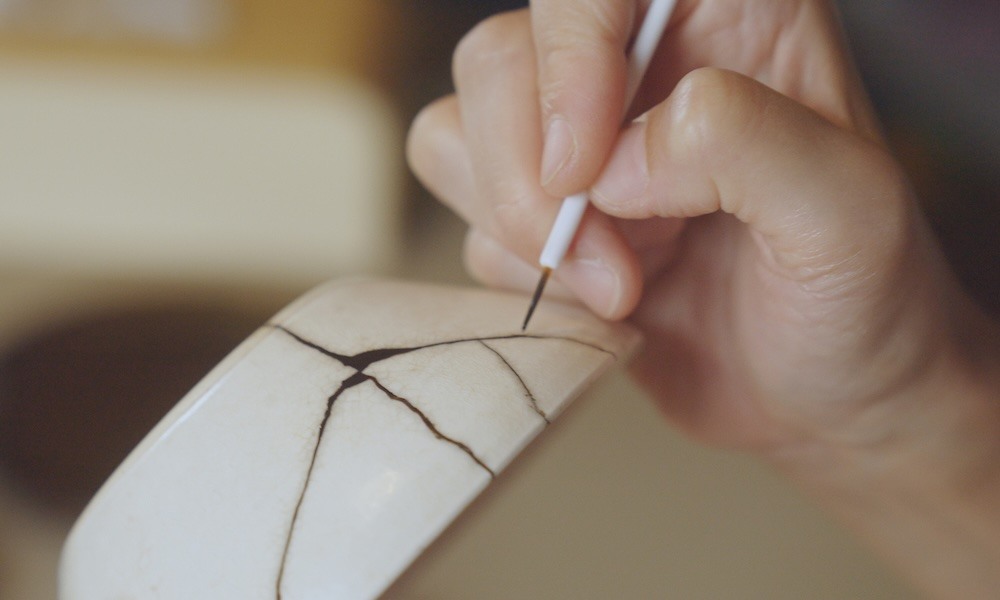
Three Ways The Ancient Art of Kintsugi Can Improve Sales Performance
In Japan, there is an ancient art called Kintsugi. In Kintsugi, broken vases are repaired using a mixture of lacquer and gold or silver powder. The resulting artwork highlights the seams of the repair, and is more beautiful for having once been broken.
I think this is a powerful concept for life. Imagine viewing your mistakes and the ways that you’ve been broken in life as an important part of your history, something that makes you more beautiful than if you’d never been broken at all.
Being who I am, of course I am always thinking about how things apply in the sales world. And, here are three ways Kintsugi can make us better at sales.
- Owning Your Mistakes Helps You Get Better
The most obvious application of Kintsugi to sales is in the simple idea that owning your mistakes can help you get better at sales. Even large failures, like that time you flubbed a major deal and lost your company a lot of money, can be viewed as an opportunity to make something better than if you’d never messed up at all.
The mindset of Kintsugi helps us take blame and shame out of the equation and instead ask: Where did I break? What went wrong? How can I restructure the way I work in these situations to be better and stronger?
When we start viewing mistakes this way, we automatically shift into a mindset of continuous improvement. It is especially helpful for managers, leaders, and coaches to view mistakes in this way. Instead of pointing fingers or automatically firing or disciplining, they can focus on helping the salesperson make something wonderful out of the wreckage of their mistakes. - Stories of Failure Can Help Buyers Succeed
One of the hallmarks of Kintsugi is that it doesn’t seek to minimize the history of breakage. Instead of trying to make it seem as though the vase is flawless, it highlights where the breakage occurred. It then becomes a part of the piece’s history, and a part of what makes it unique and beautiful.
In sales, we can use stories about our own failures to connect with buyers and help them make better decisions for themselves. This kind of sales storytelling is extremely disarming and helps salespeople get the buyer on their side.
I’ve used this from the start in talking about Membrain. One of my biggest mistakes in business was entering an endless cycle of hiring and firing, looking for a superstar salesperson. It took me a long time to realize the problem was me, not them. I wasn’t setting my salespeople up for success; their failure was my fault. By telling this story, I’m then able to talk about why I created Membrain and how it helps other business leaders avoid the mistakes I made.
Companies and individual salespeople can use their own mistakes and failures, highlighting them in order to connect and share better ways of doing things. - Experienced Salespeople Can Adapt Better to a New Environment
One thing I have seen over and over in my career is the heartbreak of highly successful salespeople entering a new sales environment and failing badly. For companies, it can seem shocking, to hire a superstar salesperson out of another company, only to discover that they underperform in their own company. For salespeople, it can be a devastating blow to self-esteem.
But it doesn’t have to be that way. Usually, when this happens, it’s because the salesperson was a “natural” in the other sales environment, but has trouble adapting what they learned there to the new environment. We see it a lot when folks come from a high-paced, transactional environment into a complex B2B sales environment with more stakeholders and longer sales cycles.
If we apply the concept of Kintsugi to this situation, we can see it as an opportunity to deliberately “break” the way the salesperson operates, look at the individual pieces, and then reassemble them. Instead of assuming that the salesperson themself is “broken,” we can see that the only thing broken is the way they approach the sale.
From there, we can assess what skills and abilities have helped them succeed in the past, and then reassemble those skills to fit the sales process and approaches that work in the new environment. Then we have a salesperson who is stronger and better for having been “broken” and “reassembled.”
In these ways, the art of Kintsugi helps us see the beauty in broken things and approach our sales teams with a healthier, more productive mindset. What do you think? How else can we apply Kintsugi in a sales setting?

By George Brontén
George is the founder & CEO of Membrain, the Sales Enablement CRM that makes it easy to execute your sales strategy. A life-long entrepreneur with 20 years of experience in the software space and a passion for sales and marketing. With the life motto "Don't settle for mainstream", he is always looking for new ways to achieve improved business results using innovative software, skills, and processes. George is also the author of the book Stop Killing Deals and the host of the Stop Killing Deals webinar and podcast series.
Find out more about George Brontén on LinkedIn







